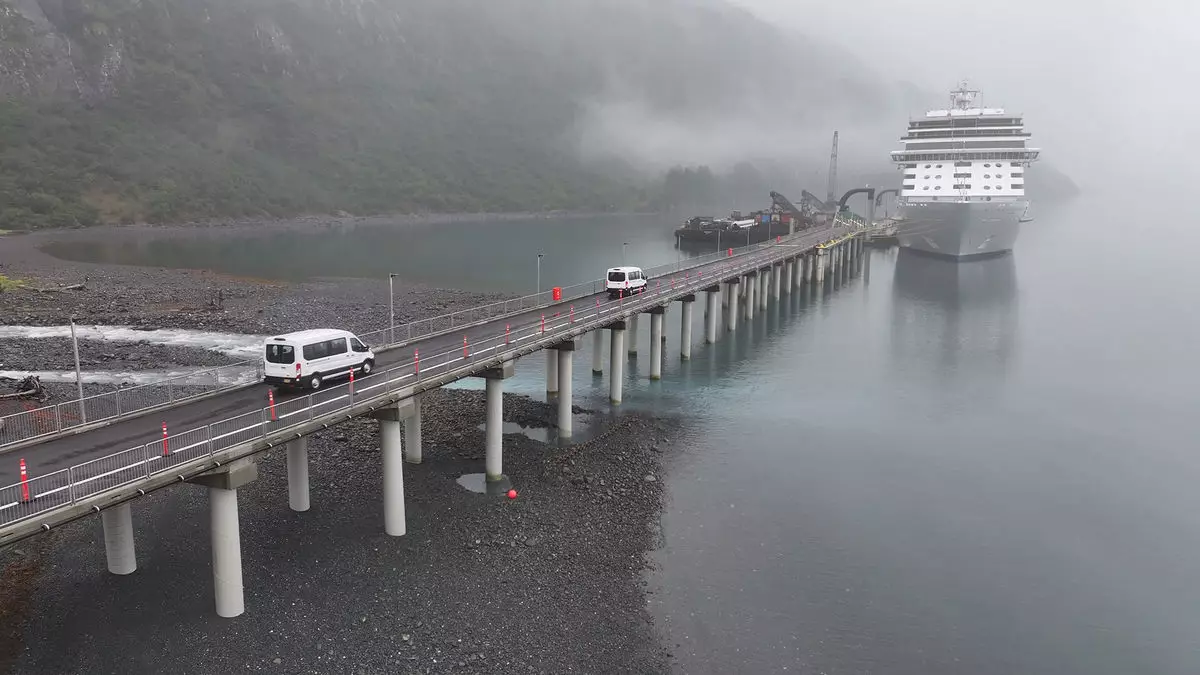The inauguration of Huna Totem Corp.’s cruise terminal in Whittier, Alaska, marks a significant development in enhancing travel access within the state. As an $80 million investment strategically positioned in the picturesque yet isolated Prince William Sound, this double-berth facility has the potential to redefine tourism in South Central Alaska. Whittier, situated roughly 60 miles southeast of Anchorage, is not just a stopover for cruise lines; it stands as a cultural and recreational hub that many travelers are beginning to discover.
With its first ship docking in September, the terminal symbolizes a collaborative effort among Huna Totem Corp., the City of Whittier, and Norwegian Cruise Line Holdings. This partnership reflects a mutual understanding of the necessity for diverse cruise offerings, especially in light of Juneau’s recent decision to impose restrictions on waterfront traffic. The terminal itself occupies 20 acres, nestled between the serene waters of Prince William Sound and the looming, rugged mountains—an emblem of Alaska’s awe-inspiring natural beauty.
Flexible Design for Diverse Needs
One of the standout features of the Whittier terminal is its adaptable design. Huna Totem Corp. prioritized creating a space that could be configured according to the varying needs of different cruise lines and their passengers. Tor Wallen, the terminal manager, emphasized this aspect, noting that they aimed for the facility to operate like a „blank slate.“ The ability to rearrange indoor spaces with movable walls and partitions allows for customization that meets the requirements of visiting cruise lines, a critical factor in attracting a broader range of operators.
This versatility extends beyond mere configurations; the terminal is equipped with state-of-the-art technology and amenities. With dedicated lounges for crew members, ample storage facilities, and modern utilities, it responds directly to the demands of contemporary cruising operations. Furthermore, installations such as a tsunami warning system demonstrate a commitment to safety and community welfare.
Beyond its functional aspects, the new terminal is poised to significantly enrich the experience of passengers disembarking in Whittier. Current plans include featuring historical photographs and local art within the terminal, providing a glimpse into the rich heritage of the locality. The discussions around integrating community art not only beautify the space but also offer visitors a deeper appreciation for their surroundings and the local culture.
Moreover, the terminal’s surrounding area is set to evolve into a vibrant tourist destination. The Huna Totem Corp. has plans for additional amenities, including fire pits, picnic areas, retail spaces, and eateries. These developments will cater to a wide variety of visitors and enhance the social fabric of the port, fostering interaction among tourists and local communities.
The terminal’s opening comes at a crucial time, as tourists are increasingly searching for unique experiences away from crowded ports. Ecotourism options like kayaking, wildlife watching, and charter fishing trips can provide a more intimate connection with the stunning Alaskan landscape. Wallen’s enthusiasm about the potential activities, such as crabbing or shrimping, indicates a shift towards experiential tourism that immerses travelers in the natural bounty of the region.
The planned excursions not only showcase Alaska’s wildlife but also support local economies. By drawing visitors to participate in these adventures, Huna Totem Corp. positions itself as a facilitator of sustainable tourism—a notable boon for Whittier’s business landscape.
To fully appreciate the impact of this new development, one must contextualize it within Whittier’s unique historical narrative. The city is often called the „town under one roof,“ a nod to the Begich Towers that house the majority of its 260 residents. The fleeting memory of military barrack origins and the omnipresence of the local Prince William Sound Museum, which chronicles the area’s vibrant history, suggest a community with deep roots.
With cruise operations increasing, Whittier stands on the cusp of revitalization, opening a door to cultural renaissance while also preserving its historical essence. The blending of new development with the community’s storied past is essential in crafting not only an inviting cruise experience but also a legacy that honors those who came before.
In essence, Huna Totem Corp.’s new cruise terminal is more than just a physical structure. It represents a bridge connecting the modern tourist experience with Whittier’s rich history, creating a future replete with opportunities for both visitors and residents alike.


Napsat komentář